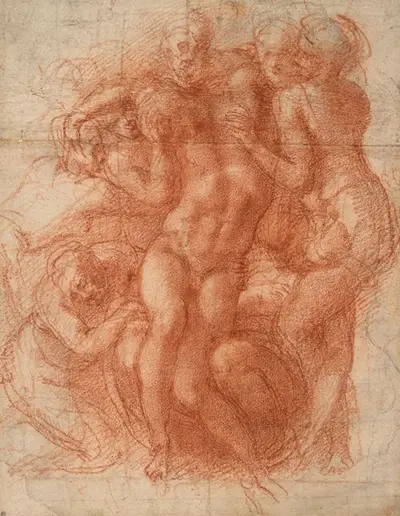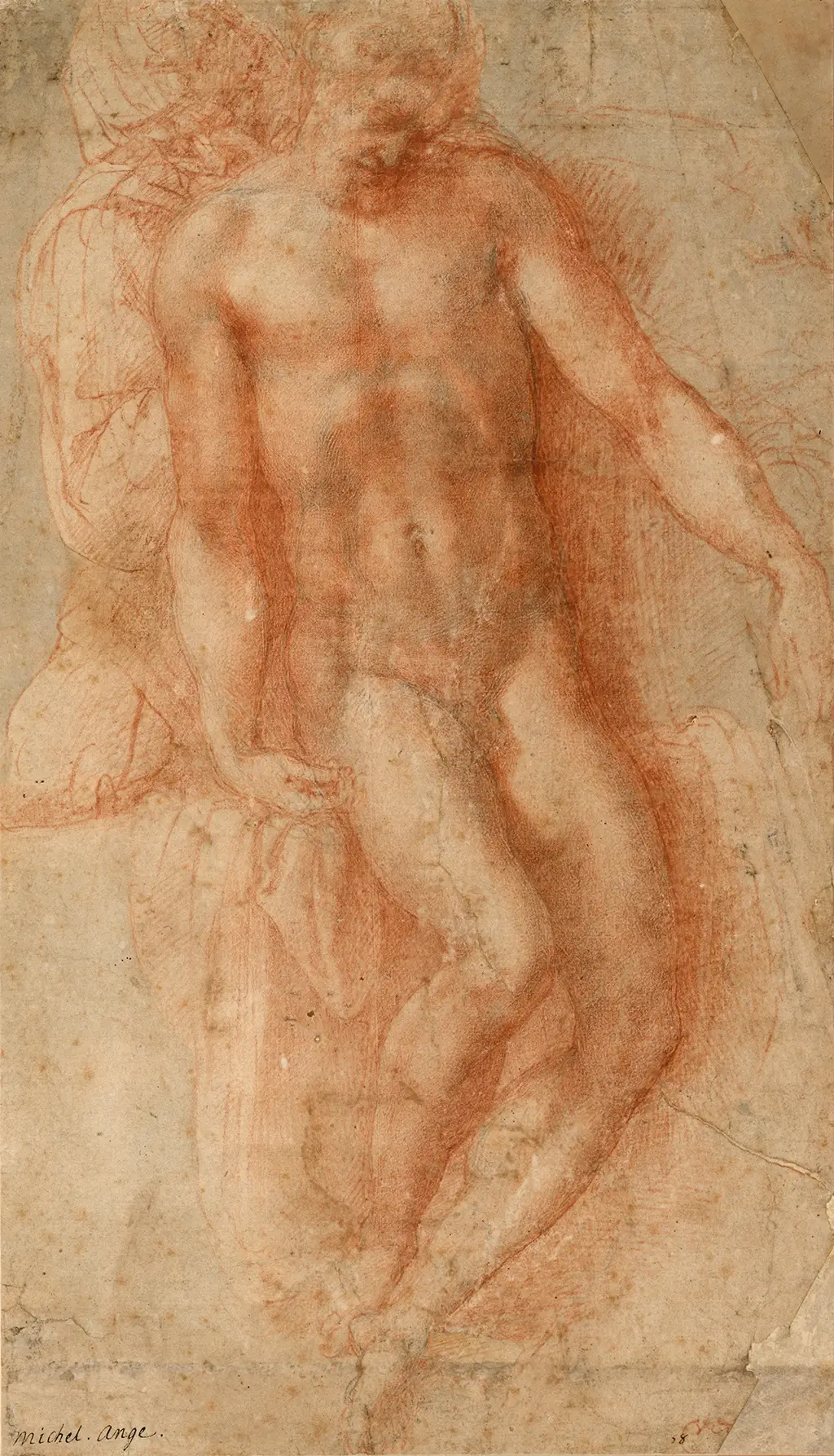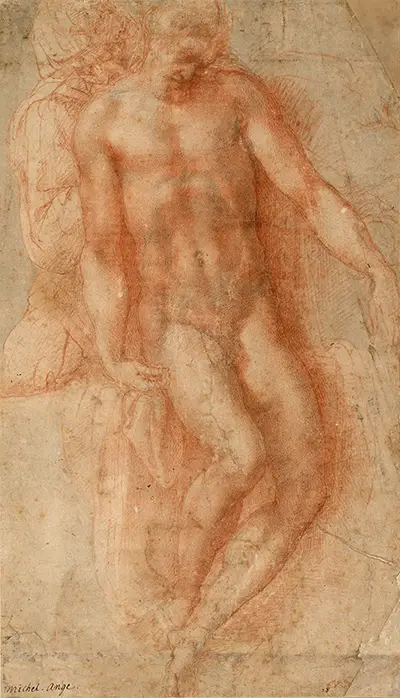Pieta is one of the two finest Michelangelo sculptures, alongside David. Whilst tourists will visit these two beautiful sculptures and appreciate their stunning qualities, few will be aware of the artistic process that Michelangelo would go through in order to produce these works.
The specific drawing highlighted here is believed to have been amended at a later date by a student of Michelangelo, possibly down to some damage occurring after he initially put it together. The Albertina in Vienna holds several sketches by this artist in preparation for his Pieta sculpture, including both of the works displayed in this page. You can find a more detailed photograph of the drawing at the bottom of the page, as well as another study sketch from the same year.
The two drawings features here were both attributed to Michelangelo in the last twenty years. Whilst that may not sound particularly convincing, the scientific processes involved today are so thorough that attribution should actually be accepted more readily than some that were decided upon in the early 20th century.
Several technical studies have been made on his artistic style in this medium over recent years and the general concenscus is that he would press down confidently and firmly in the final outline work of his drawings. The style and confidence of these two drawings is typically Michelangelo but some interesting work has been completed in contrasting these works with those of several other drawings found in the German city of Dusseldorf.
The artist would use red chalk over a black chalk underpainting for both of these drawings. That technique can be found in many other drawings that he produced during this period of his career. The Ashmolean Museum in Oxford holds Study for a Descent from the Cross and this bears many similarities. There are also a further two in Dusseldorf, although doubts have been raised about the authorship of those two.
The multi figure drawing below intertwines bodies together, as if forming a single entity. Perhaps the importance of each individual is played down by the artist in favour of the collective quality. There is also a lessening of detail on the outer edges of some of the figures which helps to focus the eye on the centre of this mass of bodies.




